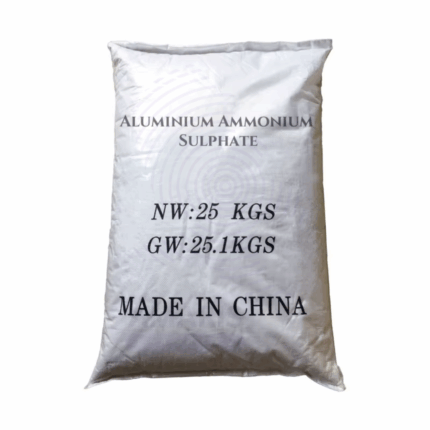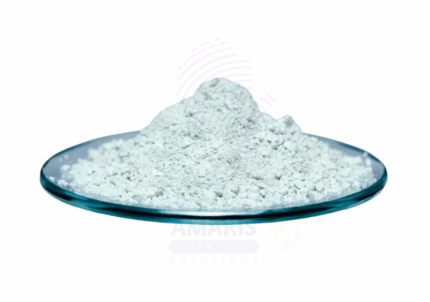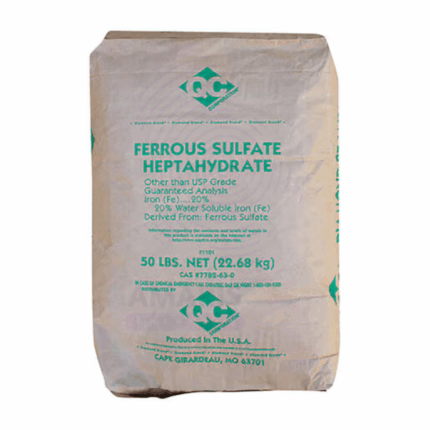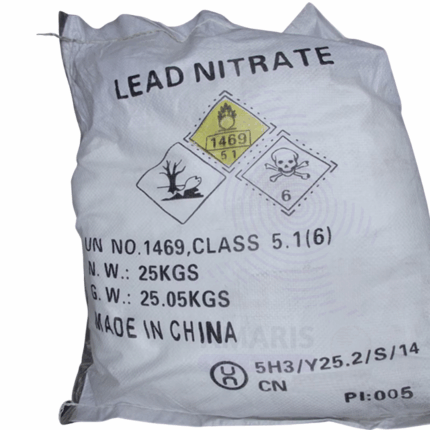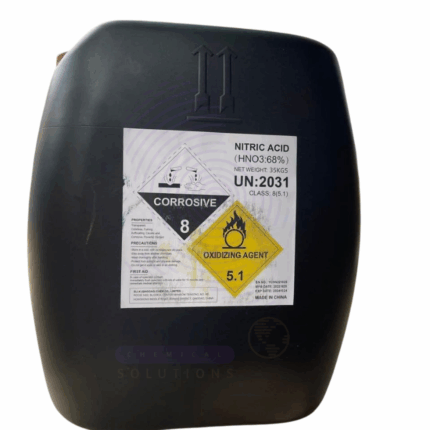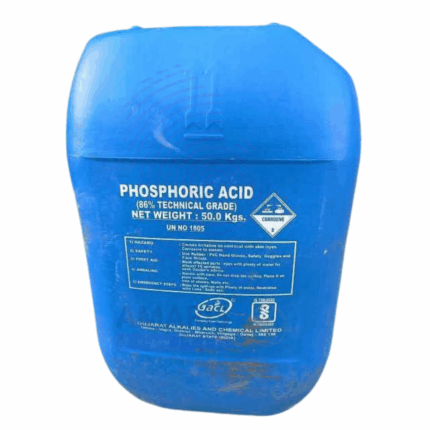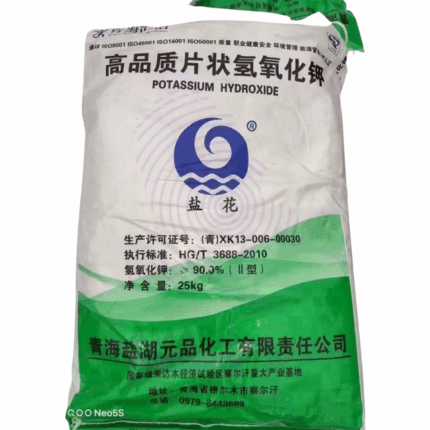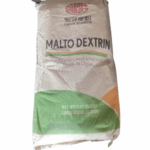
Maltodextrin
$ 2.45 Original price was: $ 2.45.$ 2.32Current price is: $ 2.32.
Calcium Hydroxide Hydrated Lime
$ 1.21 Original price was: $ 1.21.$ 1.09Current price is: $ 1.09.
Whatsapp Order
Calcium Hydroxide Hydrated Lime, commonly known as Hydrated Lime or Slaked Lime, is an inorganic compound with the chemical formula Ca(OH)₂. It appears as a white, odorless, powder or crystalline solid. It is produced by treating quicklime (calcium oxide) with water in a process called slaking. Calcium Hydroxide is moderately soluble in water, forming a strongly alkaline solution known as limewater. It is widely used in construction, environmental, chemical, agricultural, and water treatment applications due to its caustic, neutralizing, and flocculating properties.
Description
Table of Contents
Toggle
Calcium Hydroxide Hydrated Lime
Primary Uses
- Construction & Building Materials
- Used as a key ingredient in mortar, plaster, and cement for masonry and plastering works.
- Acts as a stabilizing agent in soil stabilization and road construction.
- Water Treatment
- Employed to raise pH and neutralize acidic water in municipal and industrial water treatment plants.
- Used as a flocculant to remove impurities and heavy metals from wastewater.
- Chemical Industry
- Utilized as a neutralizing agent in chemical processes and as a raw material for calcium salts production.
- Used in the manufacture of bleaching powder and other calcium compounds.
- Agriculture
- Applied to adjust soil pH (liming) to improve fertility and reduce soil acidity.
- Used as a pesticide and fungicide to control pests and diseases in crops.
Secondary Uses
- Food Industry
- Used in food processing as a firming agent, for example, in pickling and in the production of certain sugar syrups.
- Environmental Applications
- Applied in flue gas desulfurization to reduce sulfur dioxide emissions from power plants.
- Leather Industry
- Utilized in the tanning process for removing hair and impurities from hides.
KEY PRODUCT FEATURES
1. Basic Identification Attributes
- Chemical Name (IUPAC): Calcium hydroxide
- Common/Trade Name: Calcium Hydroxide, Hydrated Lime, Slaked Lime
- CAS Number: 1305-62-0
- HS Code: 2825.90.00
- Molecular Formula: Ca(OH)₂
- Synonyms:
- Slaked lime
- Hydrated lime
- Calcium dihydroxide
- Lime hydrate
2. Physical & Chemical Properties
- Physical State: Fine powder or crystalline solid
- Color & Odor: White; odorless
- Melting Point: Decomposes at ~580°C (releases water and forms calcium oxide)
- Boiling Point: Not applicable (decomposes)
- Density: Approx. 2.2 g/cm³ (powder bulk density varies)
- Solubility: Slightly soluble in water (about 1.73 g/L at 20°C), producing a strongly alkaline solution (pH ~12.4)
- pH: Strongly alkaline (in aqueous suspension)
- Stability: Stable under normal conditions; reacts with acids and carbon dioxide
3. Safety & Hazard Attributes
- Hazard Class (GHS): Corrosive (Skin and eye irritant)
- NFPA Ratings:
- Health: 3
- Flammability: 0
- Reactivity: 1
- Exposure Limits: OSHA PEL: 5 mg/m³ (respirable dust), 15 mg/m³ (total dust)
- Toxicity: Irritant to skin, eyes, and respiratory tract; ingestion of large amounts can cause severe irritation
- Reactivity: Reacts vigorously with acids; reacts with carbon dioxide forming calcium carbonate
4. Storage & Handling Attributes
- Storage Conditions: Store in a cool, dry, well-ventilated area away from moisture and acids
- Container Type: Airtight, moisture-resistant containers such as HDPE bags or drums
- Shelf Life: Stable for several years if stored properly
- Special Handling: Use PPE; avoid dust inhalation and contact with skin/eyes
5. Regulatory & Compliance Attributes
- FDA Status: Generally recognized as safe (GRAS) for specific food applications
- Pharmacopoeia Compliance: Listed in USP and BP as a reagent and pharmaceutical excipient
- Transportation: Not classified as hazardous under most regulations but handle as irritant material
- Waste Disposal: Dispose according to local environmental regulations; neutralize before disposal
6. Environmental & Health Impact
- Ecotoxicity: Low to moderate; high pH in water can harm aquatic life if released in large quantities
- Persistence: Inorganic mineral; does not biodegrade
- Bioaccumulation: Not expected to bioaccumulate
- Carcinogenicity/Mutagenicity: Not classified as carcinogenic or mutagenic
- Biodegradability: Not biodegradable
SAFETY HANDLING PRECAUTIONS
Safety handling precautions
Personal Protective Equipment (PPE):
- Protective gloves
- Safety goggles or face shield
- Dust mask or respirator (for powder handling)
- Protective clothing
Handling Measures:
- Avoid generating dust
- Handle in well-ventilated areas
- Prevent skin and eye contact
Storage Measures:
- Keep containers tightly closed
- Store away from moisture and acids
Hygiene Practices:
- Wash hands and exposed skin thoroughly after handling
- Do not eat, drink, or smoke during handling
First Aid Measures
- Inhalation: Move to fresh air immediately; seek medical attention if breathing difficulty occurs
- Skin Contact: Rinse with plenty of water for at least 15 minutes; remove contaminated clothing; seek medical attention if irritation persists
- Eye Contact: Rinse immediately with plenty of water for at least 15 minutes; seek urgent medical care
- Ingestion: Do not induce vomiting; rinse mouth and seek immediate medical attention
Firefighting Measures
- Fire Hazards: Non-flammable but may react with water or acids producing heat
- Extinguishing Media: Use water spray, dry chemical, foam, or CO₂ for surrounding fire
- Special Precautions: Firefighters should wear full protective gear and SCBA
- Decomposition Products: May release calcium oxide and hydroxide vapors under extreme heat
Related products
Aluminum Ammonium Sulphate
Aluminum ammonium sulphate, commonly known as ammonium alum or ammonium aluminum sulfate, is a crystalline chemical compound consisting of aluminum, ammonium, and sulfate ions. It typically appears as a colorless or white crystalline solid with astringent properties. It is widely used for its excellent coagulating, clarifying, and antiseptic properties. Aluminum ammonium sulphate finds applications in water purification, cosmetics, food processing, textile dyeing, and pharmaceuticals. Its ability to precipitate impurities and act as a mordant makes it invaluable in industries requiring precise control of chemical reactions, such as in the preparation of baking powder and fireproof textiles.
CALCIUM SULPHATE DIHDRATE 500gm
Calcium Sulphate Dihydrate, commonly known as gypsum, is a naturally occurring mineral widely used in agriculture, construction, and various industrial processes. It appears as a white or slightly translucent crystalline powder with moderate solubility in water. The compound is primarily used as a soil conditioner to improve soil structure and supply calcium and sulfur nutrients essential for plant growth. It also finds applications in the manufacture of plaster, cement, and as a filler in various products.
Cupric Sulphate Anhydrous
Cupric Sulphate Anhydrous (Copper(II) sulfate, anhydrous form) is a blue to green crystalline powder that is highly soluble in water. It is an inorganic compound consisting of copper, sulfur, and oxygen with the formula CuSO₄. Unlike its hydrated counterpart (CuSO₄·5H₂O), the anhydrous form contains no water molecules. It is widely used in agriculture, industry, and chemical manufacturing due to its fungicidal, algicidal, and chemical reactivity properties. The compound serves as a precursor to many copper salts and catalysts.
Ferrous Sulphate Heptahydrate
Ferrous Sulphate Heptahydrate, also known as iron(II) sulfate heptahydrate, is a pale green crystalline solid containing seven molecules of water of crystallization (FeSO₄·7H₂O). It is a widely used inorganic iron compound characterized by its high iron content (approximately 20% Fe) and good solubility in water. This hydrated salt is commonly used in agriculture, pharmaceuticals, water treatment, and various industrial processes. The heptahydrate form is preferred for many applications due to its stability, ease of handling, and cost-effectiveness.
Lead Nitrate
Lead Nitrate is a white crystalline inorganic compound composed of lead and nitrate ions. It is highly soluble in water and commonly used in laboratories and industrial applications as an oxidizing agent, in the preparation of other lead compounds, and as a reagent in chemical synthesis. Lead Nitrate is known for its strong oxidizing properties and must be handled with care due to its toxicity and environmental hazards.
Nitric Acid
Nitric Acid is a concentrated aqueous solution of nitric acid (HNO₃) commonly used as a strong oxidizing acid in numerous industrial, laboratory, and manufacturing processes. It is a highly corrosive, colorless to yellowish liquid with a pungent odor. Nitric Acid 68% is fundamental in the production of fertilizers, explosives, dyes, and pharmaceuticals. It is also widely used in metal treatment, etching, and cleaning applications due to its powerful oxidizing and nitrating properties.
Phosphoric acid Technical Grade
Phosphoric Acid Technical Grade is a concentrated, inorganic acid primarily used in industrial applications. It typically contains minor impurities compared to food or pharmaceutical grades but maintains excellent performance as an acidulant, rust remover, and intermediate chemical. This grade is widely used in manufacturing fertilizers, detergents, metal treatment, and other industrial processes where high purity is not critical but effective acidic properties are required.
Potassium Hydroxide
Potassium Hydroxide is a highly concentrated, caustic alkaline chemical available as a solid (pellets, flakes) or concentrated aqueous solution. It is a strong base widely used in industrial processes, chemical manufacturing, and as a reagent. Potassium Hydroxide provides excellent neutralizing, saponifying, and cleaning properties and is essential in producing potassium soaps, biodiesel, fertilizers, and various chemical compounds. Its high purity and concentration (90%) make it suitable for demanding applications requiring strong alkalinity.


 Preservatives(food)
Preservatives(food) Flavor Enhancers
Flavor Enhancers Acidulants
Acidulants Sweeteners
Sweeteners Antioxidants
Antioxidants Colorants(food)
Colorants(food) Nutraceutical Ingredients (food)
Nutraceutical Ingredients (food) Nutrient Supplements
Nutrient Supplements Emulsifiers
Emulsifiers
 Collectors
Collectors Dust Suppressants
Dust Suppressants Explosives and Blasting Agents
Explosives and Blasting Agents Flocculants and Coagulants
Flocculants and Coagulants Frothers
Frothers Leaching Agents
Leaching Agents pH Modifiers
pH Modifiers Precious Metal Extraction Agents
Precious Metal Extraction Agents
 Antioxidants(plastic)
Antioxidants(plastic) Colorants (Pigments, Dyes)
Colorants (Pigments, Dyes) Fillers and Reinforcements
Fillers and Reinforcements Flame Retardants
Flame Retardants Monomers
Monomers Plasticizers
Plasticizers Polymerization Initiators
Polymerization Initiators Stabilizers (UV, Heat)
Stabilizers (UV, Heat)
 Antifoaming Agents
Antifoaming Agents Chelating Agents
Chelating Agents Coagulants and Flocculants
Coagulants and Flocculants Corrosion Inhibitors
Corrosion Inhibitors Disinfectants and Biocides
Disinfectants and Biocides Oxidizing Agents
Oxidizing Agents pH Adjusters
pH Adjusters Scale Inhibitors( water)
Scale Inhibitors( water)
 Antioxidants(cosmetic)
Antioxidants(cosmetic) Emollients
Emollients Fragrances and Essential Oils
Fragrances and Essential Oils Humectants
Humectants Preservatives
Preservatives Surfactants(cosmetic)
Surfactants(cosmetic) Thickeners
Thickeners UV Filters
UV Filters
 Fertilizers
Fertilizers Soil Conditioners
Soil Conditioners Plant Growth Regulators
Plant Growth Regulators Animal Feed Additives
Animal Feed Additives Biostimulants
Biostimulants Pesticides (Herbicides, Insecticides, Fungicides)
Pesticides (Herbicides, Insecticides, Fungicides)
 Active Pharmaceutical Ingredients (APIs)
Active Pharmaceutical Ingredients (APIs) Excipients
Excipients Solvents(pharmaceutical)
Solvents(pharmaceutical) Antibiotics
Antibiotics Antiseptics and Disinfectants
Antiseptics and Disinfectants Vaccine Adjuvants
Vaccine Adjuvants Nutraceutical Ingredients (pharmaceutical)
Nutraceutical Ingredients (pharmaceutical) Analgesics & Antipyretics
Analgesics & Antipyretics
 Analytical Reagents
Analytical Reagents Solvents(lab)
Solvents(lab) Chromatography Chemicals
Chromatography Chemicals Spectroscopy Reagents
Spectroscopy Reagents microbiology-and-cell-culture-reagents
microbiology-and-cell-culture-reagents Molecular Biology Reagents
Molecular Biology Reagents Biochemical Reagents
Biochemical Reagents Inorganic and Organic Standards
Inorganic and Organic Standards Laboratory Safety Chemicals
Laboratory Safety Chemicals Specialty Laboratory Chemicals(Special Laboratory Equipment)
Specialty Laboratory Chemicals(Special Laboratory Equipment)
 Demulsifiers
Demulsifiers Hydraulic Fracturing Fluids
Hydraulic Fracturing Fluids Scale Inhibitors(oil)
Scale Inhibitors(oil) Surfactants(oil)
Surfactants(oil) Drilling Fluids
Drilling Fluids
 Dyes and Pigments
Dyes and Pigments Bleaching Agents
Bleaching Agents Softening Agents
Softening Agents Finishing Agents
Finishing Agents Antistatic Agents
Antistatic Agents
 Admixtures
Admixtures Waterproofing Agents
Waterproofing Agents Sealants and Adhesives
Sealants and Adhesives Curing Compounds
Curing Compounds Concrete Repair Chemicals
Concrete Repair Chemicals Anti-Corrosion Coatings
Anti-Corrosion Coatings
 Surfactants(cleaning)
Surfactants(cleaning) Builders
Builders Enzymes
Enzymes Solvents (Cleaning)
Solvents (Cleaning) Fragrances
Fragrances
 Electronic Chemicals
Electronic Chemicals Catalysts
Catalysts Lubricants
Lubricants Photographic Chemicals
Photographic Chemicals Refrigerants
Refrigerants Automotive chemicals
Automotive chemicals Pyrotechnic Chemicals
Pyrotechnic Chemicals
 Biodegradable Surfactants
Biodegradable Surfactants Bio-based Solvents
Bio-based Solvents Renewable Polymers
Renewable Polymers Carbon Capture Chemicals
Carbon Capture Chemicals Wastewater Treatment Chemicals
Wastewater Treatment Chemicals
 Pigments
Pigments Solvents(paint)
Solvents(paint) Specialty Coatings
Specialty Coatings Binders/Resins
Binders/Resins Additives
Additives Driers
Driers Anti-Corrosion Agents
Anti-Corrosion Agents Functional Coatings
Functional Coatings Application-Specific Coatings
Application-Specific Coatings
 Fresh Herbs
Fresh Herbs Ground Spices
Ground Spices Whole Spices
Whole Spices Spice Blends
Spice Blends Dried Herbs
Dried Herbs
 Leavening Agents
Leavening Agents Dough Conditioners
Dough Conditioners Flour Treatments
Flour Treatments Fat Replacers
Fat Replacers Decoratives
Decoratives Preservatives(baking)
Preservatives(baking)
 Plasticizers & Softeners
Plasticizers & Softeners Reinforcing Agents
Reinforcing Agents Adhesion Promoters
Adhesion Promoters Vulcanizing Agents
Vulcanizing Agents Antidegradants
Antidegradants Blowing Agents
Blowing Agents Fillers & Extenders
Fillers & Extenders Accelerators & Retarders
Accelerators & Retarders



